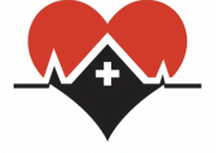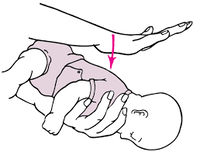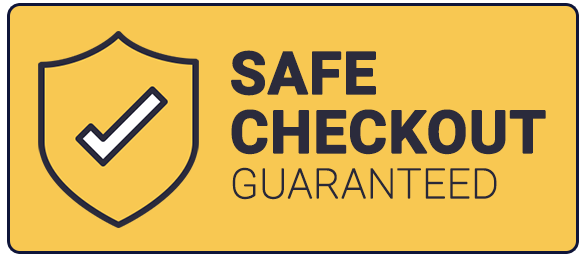Choking Signs in InfantsEmergency healthcare providers often have pediatric advanced life support (PALS) training as well as pediatric emergency assessment, recognition and stabilization (PEARS). However, the majority of parents do not have the advantage of having this type of training.
For many new parents, one of the most common unknowns is how to recognize if your child is choking. Infants make lots of noise, and it is sometimes quite difficult to tell when a noise is a sign of an emergency. Here are a few ways to tell if your infant is choking. If you notice any of the following, especially while your child is eating, seek emergency medical help immediately. 1. The infant’s face becomes darker and/or develops a blue color. 2. The infant cries, but there is no sound. 3. The infant appears agitated and begins moving around. 4. The infant appears to not be able to breathe. The following are five tips to assist in the administration of first aid to a choking baby: A. Assess the situation. If a baby is not able to to cry or cough, something may be blocking the airway. If the baby is coughing or gagging, the baby’s airway may only be partially blocked. In this situation, it is important to continue to let the baby cough in the hopes of dislodging the object. B. Call 911. If you’re unsure about what to do with a choking baby; call 911 or have a friend or family member call 911 for you. Time is imperative so the sooner you call 911, the sooner the infant can receive adequate advanced first aid and treatment. C. Use back blows. To give back blows to the infant, place the baby face-up on one forearm and cradle the back of the head with the same hand. Next, place the other hand and forearm on the baby’s front, use your fingers and thumb to hold open the baby’s jaw and turn the baby over face-down on your forearm. Then, with the heel of your hand, give five firm back blows between the baby’s shoulder blades. D. Perform chest thrusts. To perform chest thrusts, place your thumb and fingers to hold a baby’s jaw open and keep the baby between your forearms to ensure maximum head and neck support. Next, place the tips of two or three fingers in the center of the baby’s chest and push straight down on the chest approximately 1.5 inches. Administer five chest thrusts, and allow the chest to come back to its normal position after each thrust. E. Repeat 5 back blows and 5 chest thrusts until the object is removed or emergency medical personnel have arrived. CPR and First Aid are wonderful skills for parents to learn while gaining confidence needed to administer chest compressions and rescue breaths to their child or infant in the event of an unexpected choking emergency. These classes allow parents to practice CPR techniques while gaining real-world insights from medical personnel. To find out more about upcoming Infant and Child CPR and First Aid classes, call us at 210-380-5344.
Comments
|
AuthorDr. Tracy A. Jones is the CEO of Help-A-Heart CPR, LLC and an American Heart Association, ASHI, and American Red Cross Master Program Trainer, Instructor, & AHA Faculty Member located in San Antonio, Texas. Archives
June 2024
Categories |
Help-A-Heart CPR, LLC | 1747 Citadell Plaza Suite 101 | San Antonio, Texas 78209 | (210) 380-5344 | [email protected]
Copyright © Help-A-Heart CPR, LLC 2024
100% Certification Acceptance
We promise your employer, school, or agency will accept the certification card we issue to you. If there is a question of acceptance or validity, simply send us an email at [email protected] with full details. We will reach out to the individual/entity and provide accreditation information. If still there’s a question, we will provide you with a full refund of your class fee. It’s that simple.
We promise your employer, school, or agency will accept the certification card we issue to you. If there is a question of acceptance or validity, simply send us an email at [email protected] with full details. We will reach out to the individual/entity and provide accreditation information. If still there’s a question, we will provide you with a full refund of your class fee. It’s that simple.
|
Communities Served
ALABAMA: Birmingham
ARKANSAS: Fayetteville, Hot Springs, Jonesboro, Little Rock NEW MEXICO: Albuquerque TENNESSEE: Knoxville TEXAS: Amarillo, Arlington, Austin, Bandera, Bastrop, Boerne, Brownsville, Comfort, Converse, Corpus Christi, Dallas/Ft. Worth, Del Rio, Dripping Springs, El Paso, Floresville, Fredericksburg, Georgetown, Harlingen, Houston, Junction, Katy, Kerrville, Kingsville, Kingwood, Laredo, Lubbock, Lufkin, McAllen, Midland, New Braunfels, Odessa, Pleasanton, Round Rock, San Angelo, San Marcos, Schertz, Seguin, Taylor, Temple, Texarkana, Tyler, Universal City, Victoria, Waco, The Woodlands |
Why Choose Help-A-Heart CPR?
1. Flexible Scheduling
2. On and Off Location Training Available 3. Casual, Fun Atmosphere 4. Best Price Guarantee 5. All Instructors are AHA and/or ARC certified 6. 5 Star Google Reviews 7. Blended Learning (Online & Skills Check) Available 8. Meets OSHA & College CPR Requirements 9. Get Certified Within 3-4 Hours 10.Certification Is Good For Two Years 11. Official AHA/ARC/ASHI Training Site 12. High Quality Safety Training! |








